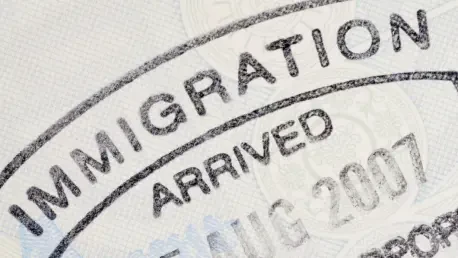I’m thrilled to sit down with Desiree Sainthrope, a legal expert whose deep knowledge of immigration policy and faith-based advocacy offers a unique perspective on the evolving landscape in the United States. With her extensive experience in drafting and analyzing legal frameworks, Desiree has closely studied how policy shifts impact vulnerable communities, particularly under the latest administration’s directives. Today, we’ll explore the intersection of faith, community action, and immigration enforcement, delving into the challenges religious organizations face, the emotional toll on immigrant families, and the moral imperatives driving advocacy efforts in places like Connecticut.
How have recent immigration policy changes under the current administration impacted the communities you work with or study?
The changes, particularly the executive orders issued early in the second Trump Administration, have created a ripple effect of fear and uncertainty. Policies loosening restrictions on enforcement in so-called sensitive locations like churches have directly undermined the trust that immigrant communities once had in these safe havens. I’ve seen through my research and conversations with community leaders in Connecticut that there’s a palpable anxiety—families are hesitant to attend worship services or seek help, worried that ICE could show up at any moment. The data showing increased arrests and deportations in the state only confirms what many feel: no place is truly safe anymore.
What do you see as the most significant hurdles for religious organizations trying to support immigrants facing deportation right now?
The biggest hurdle is the erosion of legal protections around sensitive locations. Historically, places of worship were off-limits for enforcement actions, but new directives emphasizing “common sense” discretion for ICE agents have blurred those lines. This ambiguity makes it hard for faith groups to offer sanctuary without risking direct confrontation. Additionally, funding cuts to partner organizations, like those providing resettlement services, have strained resources. Religious groups often lack the budget or legal expertise to fill these gaps, leaving them to navigate a complex and hostile policy environment with limited tools.
Can you share your thoughts on how faith communities are adapting their strategies in response to increased ICE enforcement and new directives?
Many faith communities are shifting to quieter, less public forms of support. Where once you had churches in Connecticut making bold public statements by housing immigrants, now there’s a move toward behind-the-scenes assistance—connecting families with legal aid or other supportive networks. This adaptation stems from a real fear that publicity could invite enforcement actions, especially with the new flexibility ICE agents have near protected areas. It’s a pragmatic response, but it also means the powerful moral witness of public sanctuary is being muted, which is a loss for advocacy.
What’s your perspective on the policy shift allowing more enforcement near sensitive locations like churches or courthouses, and how effective do you think this “common sense” approach is?
I find the shift deeply troubling because it undermines a long-standing principle that certain spaces should be sanctuaries for vulnerable people. The “common sense” approach sounds reasonable in theory, but in practice, it’s highly subjective and opens the door to abuse of discretion. From what I’ve analyzed in Connecticut, there are reports of arrests near courthouses—places where immigrants are often complying with legal processes. This not only discourages people from engaging with the system but also erodes trust in both government and community institutions. It’s counterproductive if the goal is public safety or orderly immigration processes.
How do you think faith communities should position themselves in immigration advocacy during such a challenging policy climate?
Faith communities have a unique moral authority to speak out on behalf of the marginalized, and I believe they should lean into that, even if it means taking risks. While private support—housing, food assistance, legal referrals—is vital, there’s also a need for public witness. Speaking out against unjust policies, as some Connecticut leaders have done, can galvanize broader community support and pressure policymakers. Balancing this with the safety of those they serve is tricky, but history shows that faith-based advocacy, like the sanctuary movement of the past, can shift public opinion and policy when it’s bold and rooted in moral conviction.
Could you share insights into the personal stories or broader trends you’ve encountered regarding immigrants’ needs and how faith groups have stepped in recently?
Through my work, I’ve come across heartbreaking trends—families torn apart by sudden arrests, often of breadwinners, leaving children and spouses in desperate situations. Faith groups in Connecticut have been pivotal in addressing immediate needs like food, diapers, and temporary shelter. I’ve learned of cases where churches quietly housed families with young children, ensuring they had time to work with attorneys on their cases. These efforts, though often unseen, provide a lifeline. They also seem to deepen the resolve of congregations, reinforcing their commitment to justice, even as they grapple with the emotional weight of these crises.
What is your forecast for the role of faith-based advocacy in shaping immigration policy over the next few years?
I think faith-based advocacy will remain a critical counterbalance to restrictive policies, but its impact will depend on how well these groups can organize and adapt. With enforcement likely to intensify, I foresee faith communities becoming even more networked with legal and secular organizations to provide comprehensive support. There’s potential for a resurgence of public action if policies become more draconian—history shows faith leaders often step into the spotlight during moral crises. However, the challenge will be sustaining momentum and resources in an environment of fear and funding cuts. I’m cautiously optimistic that their moral mandate to welcome the stranger will continue to inspire action and influence policy debates, especially at the local level in states like Connecticut.









